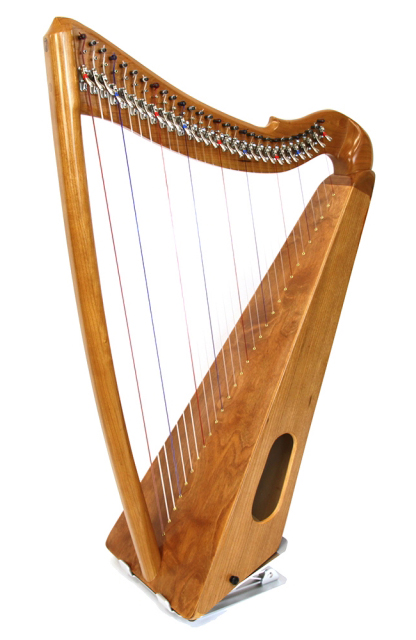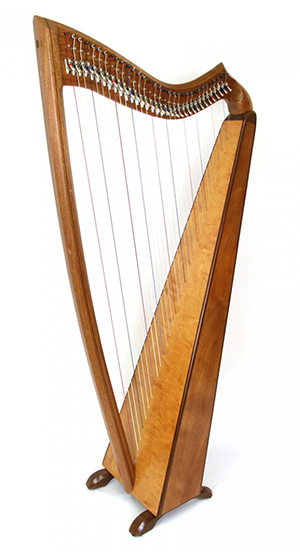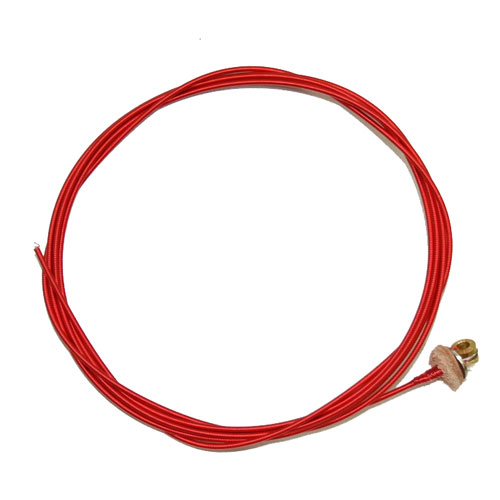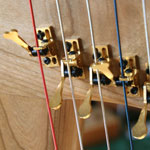Musicmakers Blog
Harp 101 - How to Choose a Harp
Harp 101 - Some helpful advice on choosing a harp.
In this article we'll go over a number of things to look for when purchasing a harp: type of harp, size of harp, number of strings on the harp, sharping levers, spring spacing, type of wood, and harp tone.
What you need to know about purchasing a harp

Q: I'm ready to buy a harp. What do I need to know so I can make a wise purchase and continue learning to play?
This is a great question and one we hear quite often.
Here are some general suggestions to get you started. I will follow up with some specific suggestions regarding strings, levers, etc.
Attend a Harp Conference
Probably the best thing you could do would be to attend one of the harp conferences like Somerset Harp Festival or visit a harp center. You’ll find harps from most of the major harp builders all in one place and you can look at, listen to, and try several different harps. All of the major harp builders are making good, durable, quality harps these days so don’t stress out too much about making a choice. Find the one that speaks to you and go for it.
Contact Harp Makers
If you can’t do that, pick up a copy of the Folk Harp Journal. It has ads from all the reputable harp makers. Check out their websites and find a couple that fit your budget and appeal to you. Give them a call or send an email if you have a question. You really can’t go wrong if you purchase a harp from one of these folks.
Rent a Harp
Rent a harp if possible and get some lessons from a local harp teacher. Pick your teacher’s brain about harps and see where that leads. They usually have the experience to point you in the right direction.
What to look for in a harp
I’m going to offer some heavy qualifications to the following recommendations because I believe very strongly that the number of strings or levers or the size of the harp is not going to determine your success in learning the harp. YOU will determine your success. If you really want to learn to play harp, you will learn to play harp regardless of the harp you start out playing.
What is the difference between a folk harp, a celtic harp, a lever harp, and a concert harp?
There are essentially two types of harps - Pedal Harps and Non-Pedal Harps. Pedal harps are the great big harps you see in the orchestra. These types of harps use a complicated pedal mechanism to change keys, weigh between 60 to 100 pounds, and cost upwards of $20,000.

Folk Harps, Celtic Harps, and Lever Harps all refer to non-pedal harps, and are, for all practical purposes, the same thing. These types of harps use sharping levers to change keys. Sharping levers are a much simpler system and much less heavy. Folk harps weigh between 12 to 40 pounds and cost between $1500 and $6000
What Size of Harp Should I Choose?
When it comes down to it, there are really two sizes of folk harps - floor harps and lap harps. A floor harp sits on the floor while you play it and a lap harp sits on, yep, you guessed it, your lap. The majority of harpists play a floor harp as their main harp. Lap harps are for people that need something extremely portable. And just because lap harps are smaller does not mean that they are more suitable for children. Asking a young student to try and hold a lap harp on their lap while they try to learn to play will make for a frustrated student!
Floor harps come in all shapes and sizes. No matter what size harp you end up with I promise you that you will be able to find a stool or chair that will allow you to play your harp comfortably. If the harp seems too short, set it up on a small box or find a lower chair. If your harp seems too tall, find a higher chair or stool. This is such a simple adjustment to make and yet we see people agonize over this. Don’t worry about it. If you want to learn to play harp you are going to be so lost in the beautiful sounds you are making you aren’t going to be thinking about this.
How many strings should my harp have?

I can’t tell you how many times a wanna-be harp player walks into our shop looking for a harp with 36 strings. We will have 8 beautiful harps on the floor with 31-34 strings that they won’t even consider because their harp teacher said they HAVE to have a harp with 36 strings. What utter nonsense. And what a disservice to that student. You no more need 36 strings to learn to play the harp than you need a book with at least 300 pages to learn how to read.
Most floor harps are going to have 29+ strings and that will be plenty. Don’t get hung up on the bottom note or how many strings there are. I promise that you will find plenty of music to play no matter how many strings your harp has. Sure, having more strings does mean you will be able to play a wider range of notes. But notes are not the same thing as music. Notice the amazing street musicians you see playing their hearts out on 22-string travel harps. They certainly aren’t hindered by the lack of strings. If you want to play the harp, you will find plenty of music to play no matter how many strings you have.
Should my harp have sharping levers?

Having a full set of levers gives you the most options but - don’t worry about it! You’ll find plenty of music that won’t require levers at all. If you are willing to spend 2 minutes to re-tune about 8-10 strings on your harp, you can play in the keys of G and D. Once that is done, you can play 90% of the folk and Irish repertoire. Also keep in mind that levers can be installed any time. If you buy a harp without levers, you should be able to take it back to the shop and have levers installed at a later date.
How big or small should the string spacing be on my harp?
Don’t worry about this - seriously! First of all you should know that there is no standard, measurable “concert harp string spacing” for harps. Second - I promise you that the fundamentals of technique will work with any harp string spacing. The string spacing does not vary all that much between the reputable harp makers you’ll find in the Folk Harp Journal. As a beginner, you won’t be used to any string spacing so it just won’t matter. As you get more advanced, you may find you enjoy playing harps with narrower spacing or vice versa. That’s great. But don’t worry about it now. The fundamental finger motions are the same no matter what the spacing is.
What woods should I choose for my harp?
The wood used on the soundboard can have a dramatic impact on tone. Solid wood spruce soundboards have a lively warmth to them but are prone to cracking with humidity changes. Modern plywood soundboards are a bit brighter but their durability and longevity make them well worth it. For a much more detailed look at soundboard wood, read this article.
The wood used on the body, neck, and pillar has a much more subtle effect on tone and it takes a very fine and trained ear to hear the difference between two like model harps in different woods. So I would suggest going with the wood that looks best to you.
What kind of tone should my harp have?
I promise you that your harp is going to sound good to you. Almost all harps sound like - well they sound like harps! They are beautiful sounding instruments that are a joy to practice and play. Yes - every harp has its own timbre and quality. Some are louder, some are softer, some are brighter, some are more mellow. The tonal shading between harps is infinite. Don’t worry about it. If you are sitting in a harp shop going back and forth between 3 different harps trying to find the one that sounds best - that’s fine. But don’t agonize over it. Keep in mind that when you get home, you’ll only have the one harp. You won’t have other harps to compare it to and you’ll fast forget what the other harps sounded like. If you want to play the harp, you’ll spend a lot of time with your first harp and you will become intimately familiar with its tone. Developing this intimacy will provide you with a baseline against which to measure the tone of other harps. Until you have done this, you just don’t really know what you are looking for.
Conclusion
I hope this article has been helpful as you consider buying your first harp. My main goal has been to impress upon you the idea that YOU are the most important factor in learning to play the harp. If your desire is to learn to play - keep your focus and your actions centered around learning to play and don’t get distracted by all of the harp options. Learning to play harp can be such a delight. Relax. Have fun. Give yourself permission to noodle around with your eyes closed. Play a simple three or four note pattern and enjoy the soothing vibrations and wonderful sounds.
Considering purchasing a lever harp? Musicmakers builds a variety of lever harps to accommodate all harpists from beginner to professional. Our harp selection serves a variety of needs: travel, music therapy, and concert halls. We have something just for you.
